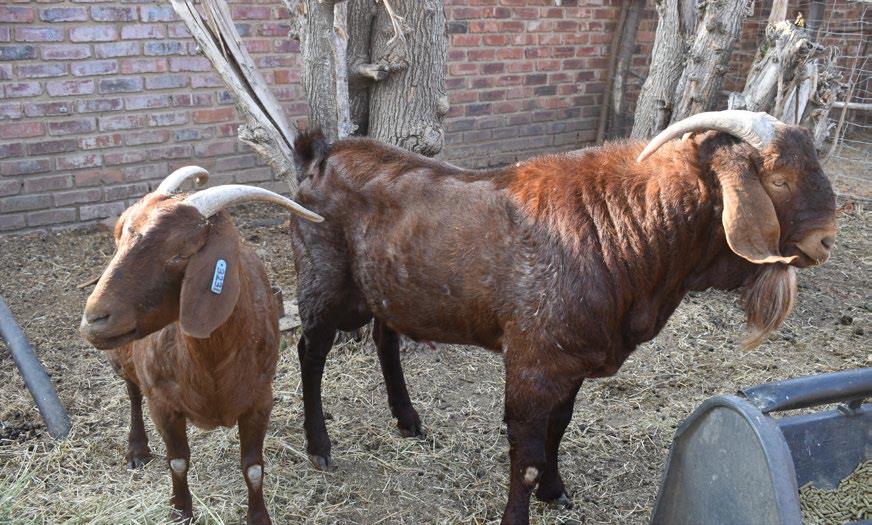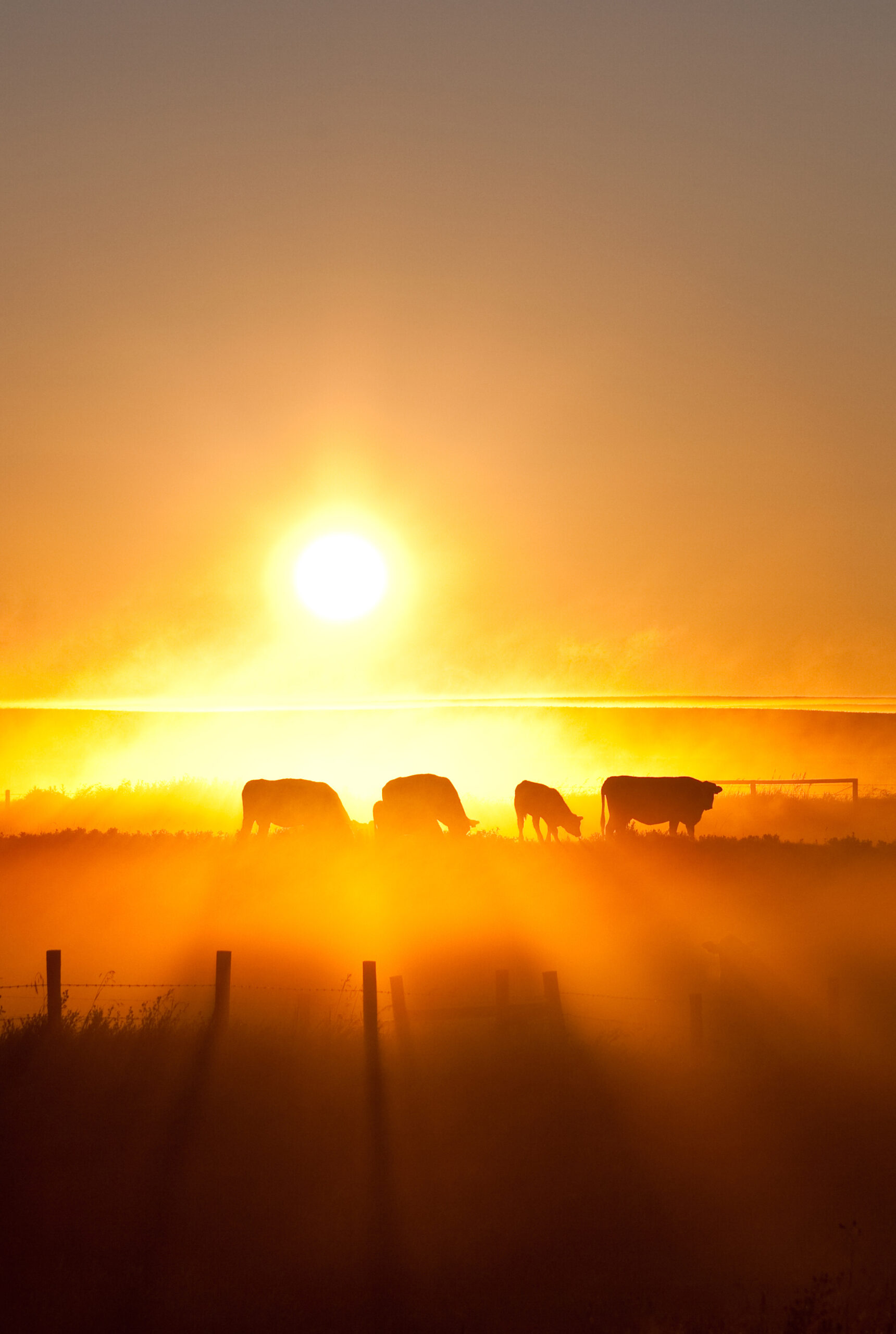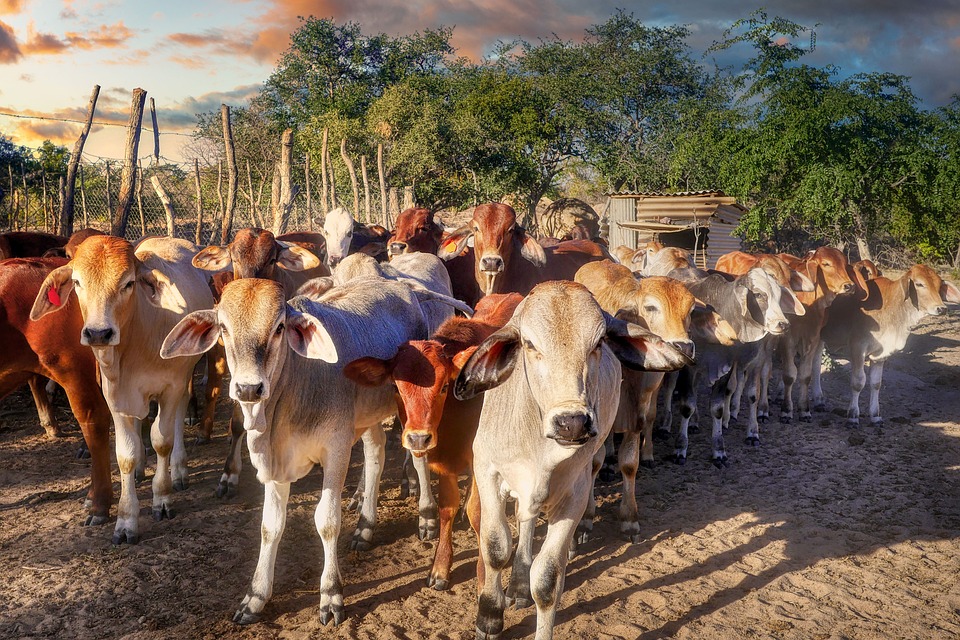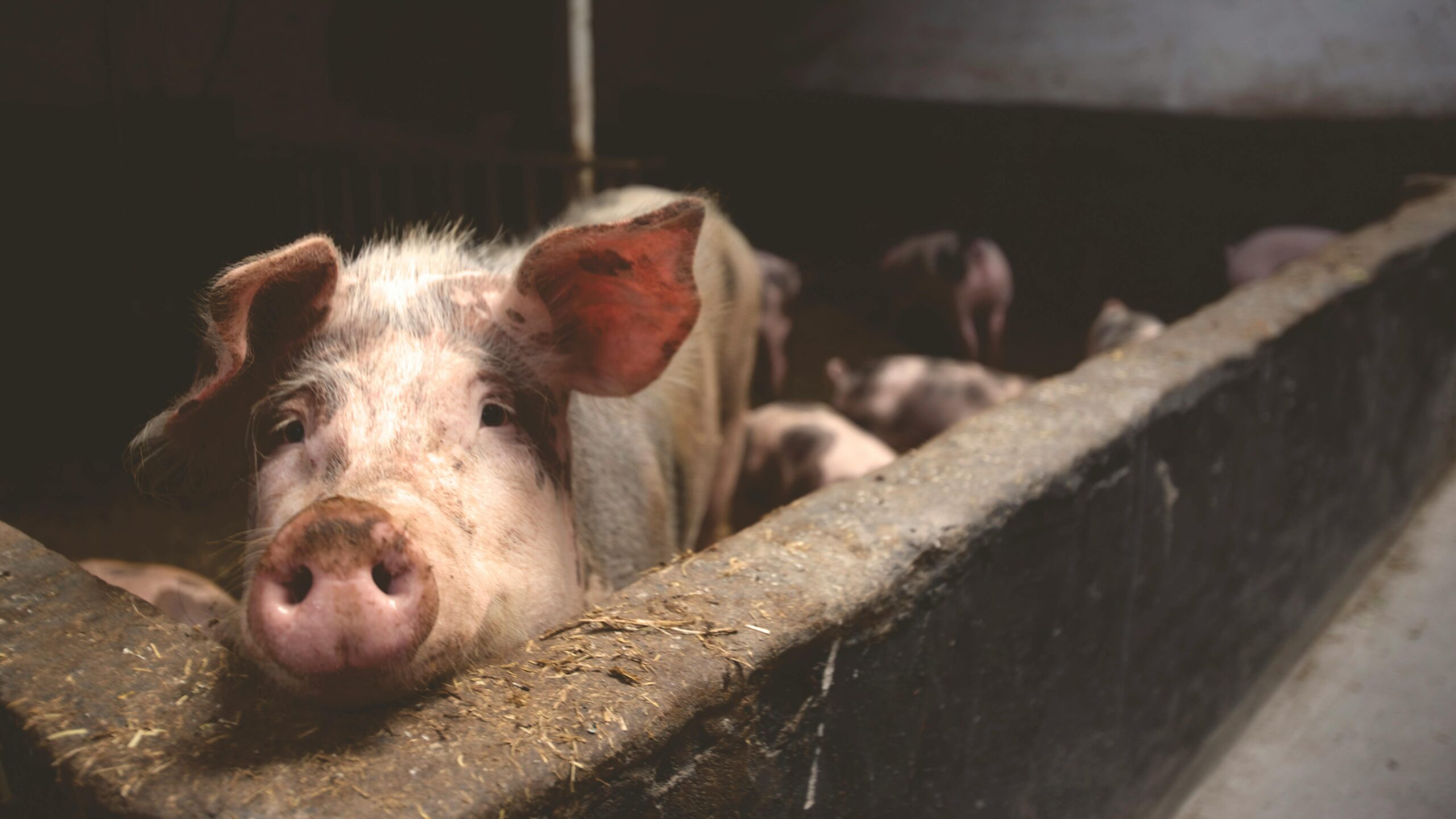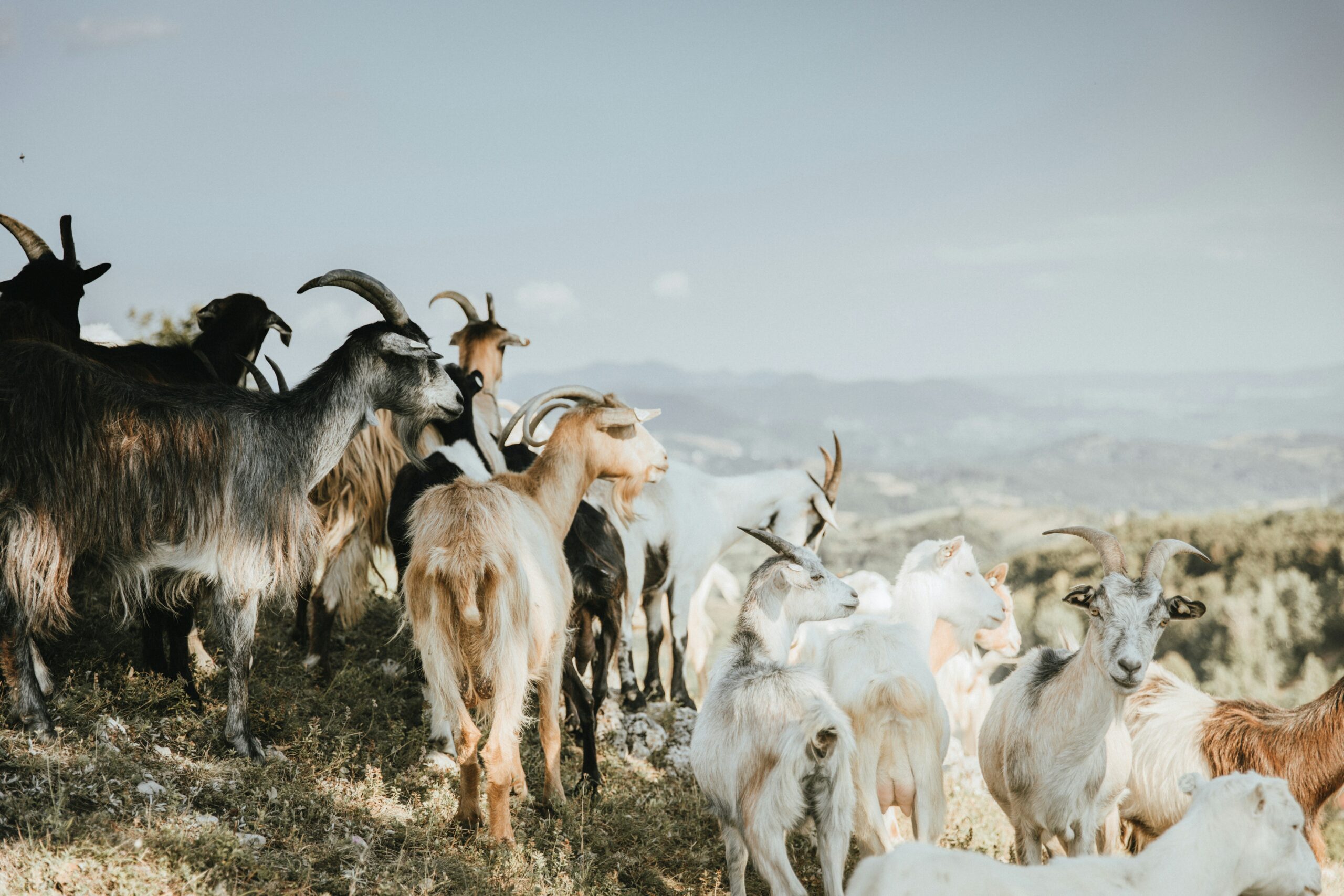Goat farming can be a lucrative business if managed properly. This guide will help you to increase your goat herd with healthy animals, and also your profits. The top meat producing goat breeds are the Boer Goat, Savanna and Kalahari Red.
These animals have a bigger body frame and are favoured by goat farmers who prefer them for their meat production. The indigenous veld goat (IVG) does not produce as much meat as the bigger goat breeds but is still in demand for cultural and religious practices.
There are some critical aspects to consider when setting up a goat farm. Housing, feeding, breeding, disease control and vaccination requirements all need to be carefully researched before starting your own goat herd. Each of these aspects will be discussed here, but it is important to know that you should consult the experts to get a specific guide for feeding and vaccinating the animals.
Housing
It is recommended that there should be about 0,5 m2 per goat in the holding pens where they sleep at night. Keeping them indoors at night will help to prevent theft and diseases caused by exposure during the cold winter months. Make sure that the area where the goats are kept, is not wet and muddy. This will help to prevent illness in the herd. It is important to determine the number of goats that you can keep on your available land. The carrying capacity of pasture depends on the geology, rainfall and plant species that grow on your farm.
Decide whether you want to feed the goats or let them roam free to forage for food. Each has its own advantages and disadvantages. Feeding the animals can result in faster growth and better meat production, but it costs much more than free-range foraging. The disadvantage of free-range goats is that they grow slower because they use energy to browse finding food; however, the positive side is that it costs less to feed them. Goats can easily over-graze an area; so, if you decide on free-range, make sure that the herd can be rotated in different camps, allowing the pasture to recover. Many farmers opt for a combination of free-range and then feeding the goats only the necessary protein additives.
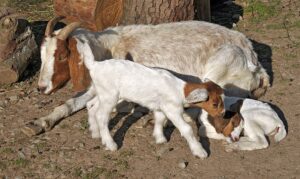
Twins are not uncommon among Boer goats (Photo courtesy of wikimedia.org)
Breeding
If properly managed, goat ewes can produce a kid every year because they have a five-month gestation period. Goats can be artificially inseminated, but it is expensive and less effective. Natural breeding can be very effective if managed properly. Monitor the herd for ewes on heat (rut) and keep them in a separate camp where the billy goat can service them. The breeding rams should be rotated every two years to ensure good genetics and prevent inbreeding.
Diseases
Goats are prone to some common diseases. Whenever you detect these symptoms in your animals, you should consult a veterinarian as soon as possible.
Below is a table that lists the most common diseases and their symptoms:
| Disease | Symptoms |
| Worms (Internal parasites) | Poor body condition, diarrhoea |
| Mange | Hair loss, itchy skin, usually on the head, neck and back |
| Pinkey | Swelling and redness of the eyes. It may have discharge. Highly contagious. |
| Pneumonia | The goat will appear sick and have a nasal discharge, eye discharge, difficulty breathing or coughing |
| Foot rot | Lameness of the limbs, limping, more common in wet, muddy conditions |
Vaccination programmes
Once again, a vet should be consulted to provide you with a good vaccination programme. The vaccination guide should give you an idea of what to do and when to do it.
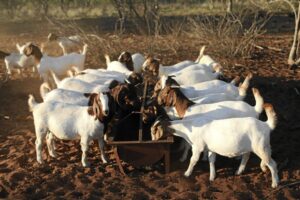
Boer goats are also favoured by goat farmers for their meat production. (Photo courtesy of timeslive.co.za)
Goat kids
The kids should be vaccinated against heartwater within the first 7 days after birth. From the second week of life, the Pasteurella vaccine should be given twice, four weeks apart. Pulpy kidney, Pasteurella and black quarter (anthrax) should be vaccinated before weaning. At six months of age, they should be vaccinated against bluetongue, pulpy kidney, and black water.
Adult goats
Between April and May, they should be vaccinated against Pasteurella. From August to September the pulpy kidney, black quarter and anthrax vaccines should be given. Before breeding, all the females should be vaccinated against chlamydia and against blue udder before they give birth.
It is essential to seek help from your veterinarian if you detect any of the above-mentioned symptoms in your herd.

